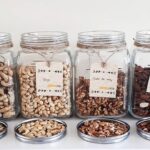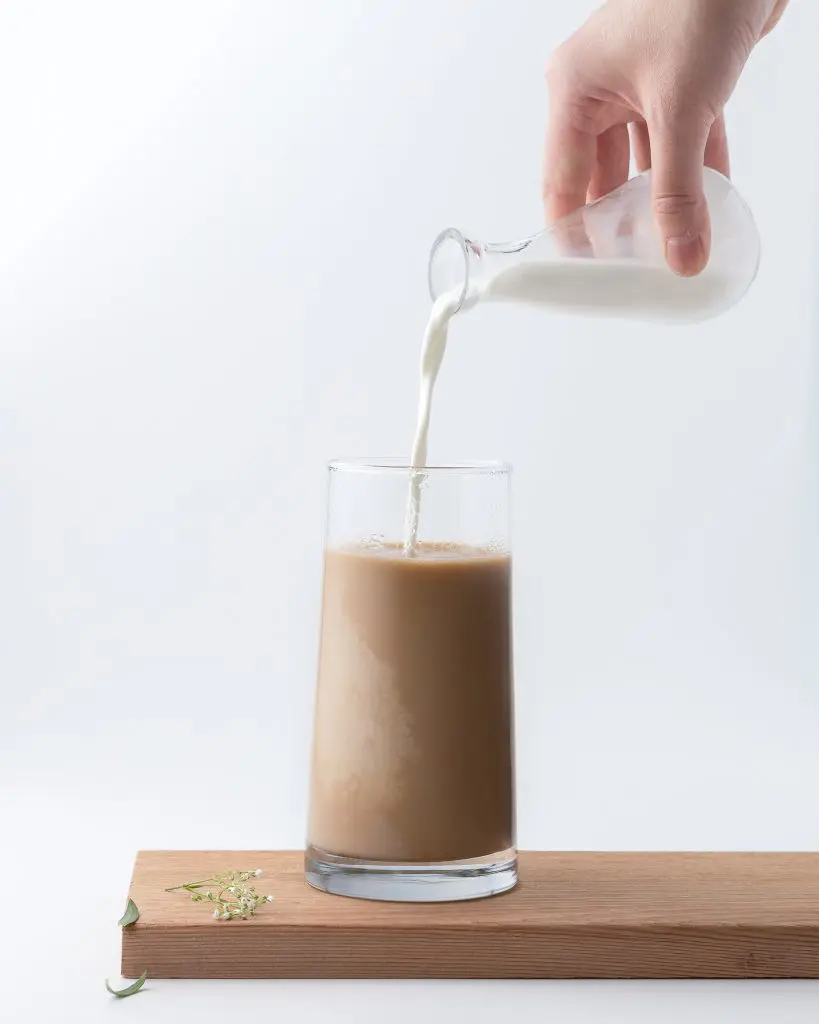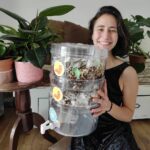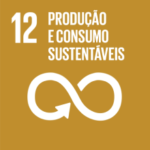
Bulk stores in Leiria city Check out these sustainable businesses that do not need packaging
Are you a fan of bulk buying and do you live or are you around Leiria? We have gathered five stores that promote a more
Suddenly, supermarket shelves are full of alternatives to cow’s milk. But what is the best option? It depends on the objective, but reading the labels is key.
Whether due to lactose intolerance, ethical concerns, a desire to improve health issues, or just personal taste, more and more people are giving up cow’s milk and using plant-based drinks as an alternative.
The market is attentive and, nowadays, there are dozens of options available and for all tastes, from soy to oatmeal, coconut, rice, almond, hazelnut, pea, or options that mix some of these flavors.
But, given the ingredients and the way they are produced, are these options more sustainable for our health and the health of the planet?
Which beverage has the least environmental impact?
According to an article in the BBC magazine Science Focus, using the measurement of a glass (200ml), cow’s milk is the drink that releases the most greenhouse gas emissions into the atmosphere, at 0.63kg. On the other side of the scale is the almond drink, which releases 0.14kg. As far as land use is concerned, cow’s milk is the most invasive, with 1.79m², of land, in which case the rice drink uses the least land per 200ml, with 0.07m². Regarding the liters of water spent in production, cow’s milk is again the highest, with 125.6 liters of water per cup. As for the vegetable beverages, the one that uses the least liters of water to produce one glass is the soy beverage, with 5.6l. Importantly, while still using less water than cow’s milk, the almond drink consumes 74.3 liters of water per cup.

The importance of reading labels
Science has not yet found consensus regarding the role cow’s milk plays in our health. Many studies point to it being an important source of calcium and protein, others are concerned about the level of saturated fat and the associated potential health risks.
If, for health or environmental concerns, the consumption of vegetable beverages becomes a daily part of our diet, it may be important to understand which one is best for the body. Ana Isabel Monteiro, nutritionist and author of Laranja Lima blog, explains, in an article published in her blog, that whatever the flavor, the important thing is to know how to analyze the label
If all those tiny letters make you confused, take note of this tip: it is important that the main ingredient (and the one that appears first) is water, followed by the food in question (soy beans, oatmeal, almonds, etc.) and have a form of calcium (calcium carbonate, algae extract Lithothamnium calcareum, tricalcium phosphate, etc.). It can also have some sea salt.
The presence in more than 2g (per 100g) of sunflower oil is to be avoided, and to be banned is even the sugar, which often appears in the form of cane sugar, glucose syrup, or maltodextrin.
As far as the nutritional issue is concerned, soy beverage is the closest to the nutritional profile of cow’s milk. It has 3.2g of protein per 100g and is the most nutritionally balanced, especially if it has no added sugars and is enriched with calcium.

Rice drinks and oat drinks are the most caloric, and do not have very high protein levels (0.6g and 1.9g per 100g, respectively). Ana Isabel Monteiro says that they can be a good strategy for athletes or people looking to gain weight – given the high supply of carbohydrates.
Coconut drink is often mixed with rice or oatmeal, so it follows the same indications as the previous ones. The almond drink, on the other hand, provides neither energy nor major macronutrients, since it has only 13kcal (per 100g). However, it can be a good option for those looking to lose weight.
Choosing to consume vegetable beverages over animal beverages has considerable benefits for the planet, as well as being able to resolve food intolerances. It has health benefits, however, there is still room for improvement in some ingredient lists, so it is essential to gather information about the nutritional properties of each drink so that we can make healthy and thoughtful choices.


Are you a fan of bulk buying and do you live or are you around Leiria? We have gathered five stores that promote a more

We know that, just like us, there are hundreds of other projects wanting to do more for the planet. We went to find out more

The right answer is: none! Dishes that we no longer use or that are broken don’t go in the recycling garbage can, but they shouldn’t

This article promotes an action that encourages the reduction of waste generation through prevention, reduction, recycling, and reuse.
➡️ To discover more businesses that are aligned with Sustainable Development Goal 12 “Sustainable Production and Consumption” click here.
➡️ For news, tips and interviews about this topic, click here
➡️ Want to know more about the 17 United Nations Sustainable Development Goals? Click here
Esta publicação também está disponível em:
![]() Português (Portuguese (Portugal))
Português (Portuguese (Portugal))